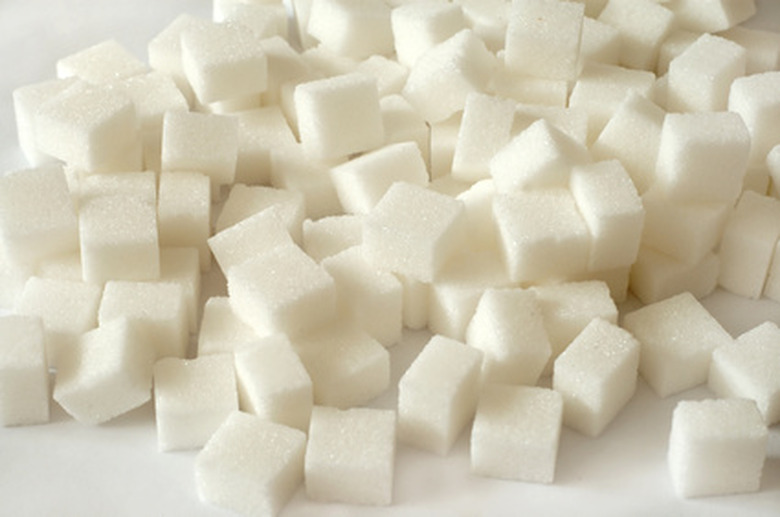How To Make A Supersaturated Solution With Sugar
A "supersaturated" solution contains more dissolved material than it should, according to the compound's solubility. In the case of sugar, whose chemical name is "sucrose," about 211 grams will dissolve in 100 milliliters of water. The first key to preparing supersaturated solutions lies in the temperature of the water. Solubility depends on temperature; more sugar will dissolve in hot water than in cold. The second key to preparing supersaturated solutions lies in preventing the excess sugar from crystallizing (solidifying) as the solution cools. In general, rapid cooling produces supersaturated solutions, whereas slow cooling favors crystallization.
Step 1
Bring 8 oz. of water to almost boiling in a 2-qt. sauce pan. This represents about 240 milliliters of water, which, according to the solubility of sucrose, should be able to dissolve about 500 grams (18 oz.) of sugar.
Step 2
Add 16 oz. (1 lb.) of sugar to the pan and stir until dissolved. Continue adding sugar to the solution about 1 oz. (2 tbsp.) at a time until no more sugar will dissolve in the hot water.
Step 3
Transfer the solution (slowly) to a clean glass and place the glass in a freezer for about 15 minutes. If any undissolved sugar is present in the sauce pan, be sure not to transfer it into the glass; any crystalline sugar provides a "seed" for additional sugar to crystallize.
Step 4
Pour the supersaturated solution into a bowl or pan containing crystalline sugar. This should induce nearly instantaneous crystallization of the sugar from the solution. Alternatively, sprinkling a few crystals of sugar into the glass containing the solution should also trigger rapid crystallization.
Things Needed
- 2 lb. sugar
- 2-qt. sauce pan
- Tablespoon
- 16-oz. drinking glass
- 8-oz. measuring cup
TL;DR (Too Long; Didn't Read)
If the supersaturated solution crystallizes upon cooling (if it is a white solid when you remove it from the freezer), try using a different glass, preferably one with very smooth walls. Scratches in the glass also act as "seed" crystals to induce crystallization.
Warning
This experiment involves boiling water; exercise care when handling cooking pans and other containers.
Cite This Article
MLA
Brubaker, Jack. "How To Make A Supersaturated Solution With Sugar" sciencing.com, https://www.sciencing.com/make-supersaturated-solution-sugar-6199355/. 24 April 2017.
APA
Brubaker, Jack. (2017, April 24). How To Make A Supersaturated Solution With Sugar. sciencing.com. Retrieved from https://www.sciencing.com/make-supersaturated-solution-sugar-6199355/
Chicago
Brubaker, Jack. How To Make A Supersaturated Solution With Sugar last modified March 24, 2022. https://www.sciencing.com/make-supersaturated-solution-sugar-6199355/
